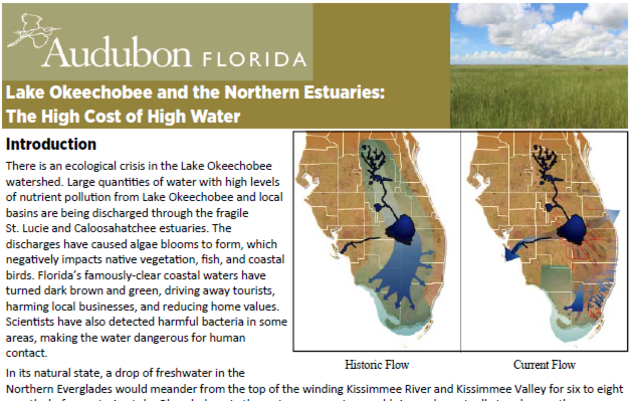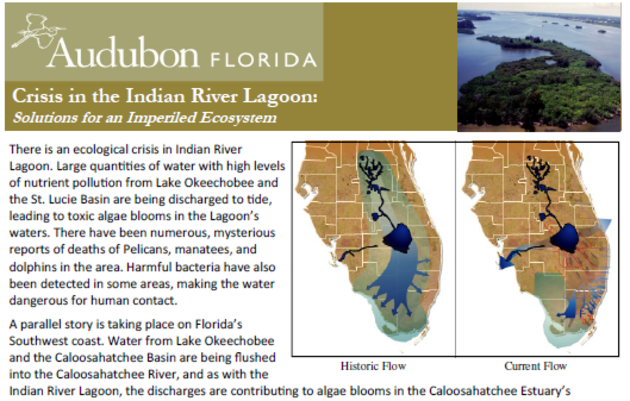Florida’s coastal waters are experiencing an unprecedented ecological collapse.
During the 2015-16 dry season, South Florida experienced record rainfall causing wetlands, lakes, and other water storage areas to fill to capacity. Absent other storage options, billions of gallons of freshwater per day have been discharged from Lake Okeechobee to the St. Lucie and Caloosahatchee estuaries to protect the aging Herbert Hoover Dike and Lake Okeechobee’s ecology. When too much freshwater reaches the estuaries, changes in the balance of fresh and saltwater causes algae blooms, which harm submerged vegetation, fish, and water birds.
The estuaries’ famously-clear waters have turned cloudy brown and green - driving away tourists, harming local businesses, and reducing home values. Harmful bacteria has made the water in some places dangerous for human contact.
Click here to learn more in our latest fact sheet.
At the same time that the estuaries in the northern part of the Everglades are being impacted by too much freshwater, a massive seagrass die-off in Florida Bay is occurring because of insufficient freshwater. Without a source of freshwater from the upstream Everglades, Florida Bay has not been able to recover from dry conditions that altered the delicate balance of fresh and saltwater over a year ago. The prediction for the Bay is a deeper collapse, including algae blooms and fish die-offs within a few years.
Storing water south of Lake Okeechobee in the Everglades Agricultural Area will provide an outlet for water being discharged to fragile coastal estuaries while concurrently holding water that can be sent south to Florida Bay. State and federal agencies have been urged to move ahead with planning the long-anticipated and desperately needed EAA Reservoir project.
An important provision in the Legacy Florida Act directs that funding is prioritized for projects that reduce the discharges of water from Lake Okeechobee to the St. Lucie and Caloosahatchee estuaries. In line with this directive, Audubon strongly urges the state and federal restoration partners to accelerate efforts to store water south of the Lake in the Everglades Agricultural Area (EAA).
An EAA storage reservoir is part of the Comprehensive Everglades Restoration Plan that would provide an outlet for massive Lake Okeechobee discharges. But planning for EAA storage has been delayed until 2020.
For more information on this important priority, please review Audubon’s fact sheet. Click here to download.







